Abstract
Interrupted time series designs are frequently employed to evaluate program impact. Analysis strategies to determine if shifts have occurred are not well known. The case where statistical fluctuations (errors) may be assumed independent is considered, and a segmented regression methodology presented. The method discussed ia applied to the assessment of changes in local and state perinatal postneonatal mortality to identify historical trends and will be used to evaluate the impact of the North Carolina Regionalized Perinatal Care Program when seven years of post-program mortality data become available. The perinatal program region is contrasted with a control region to provide a basis for interpretation of differences noted. Relevant segmented regression models provided good fits to the data and highlighted mortality trends over the last 30 years. Considerable racial differences in these trends were identified, particularly for postneonatal mortality. Segmented regression is considered relevant for the analysis of interrupted time series designs in other applications when errors can be taken to be independent. Thus, the methodology may be regarded as a general statistical tool for evaluation purposes.
Full text
PDF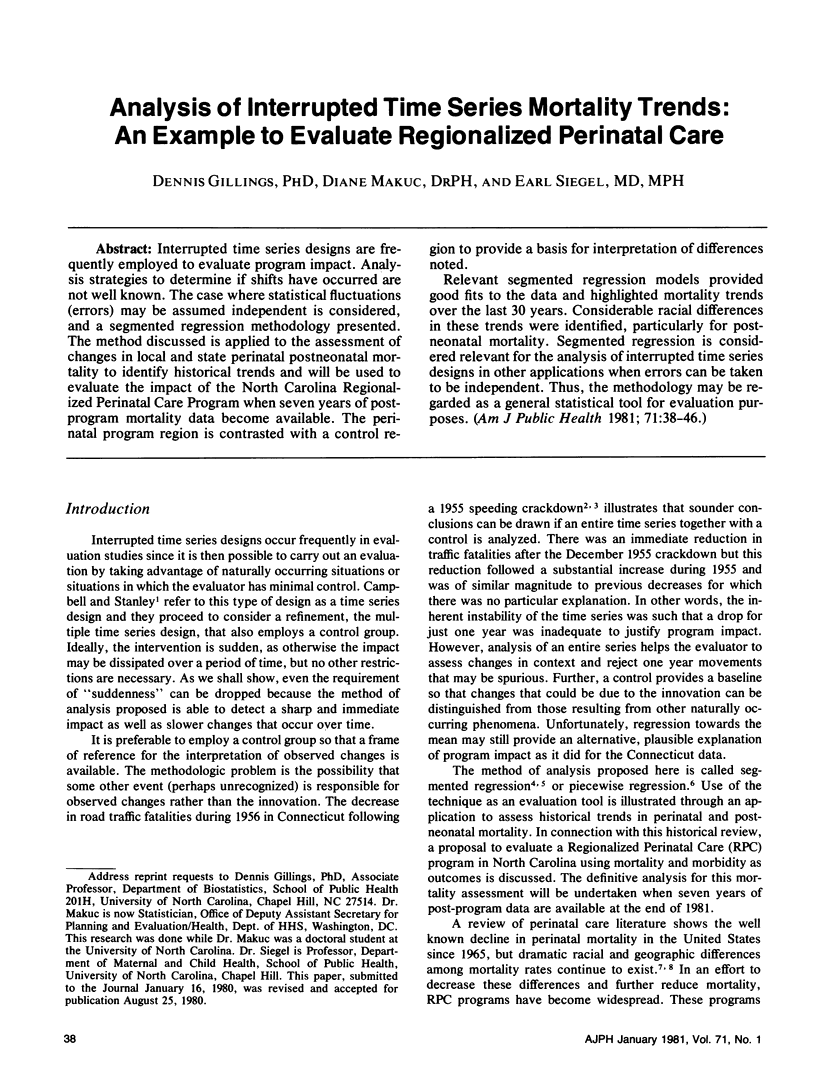
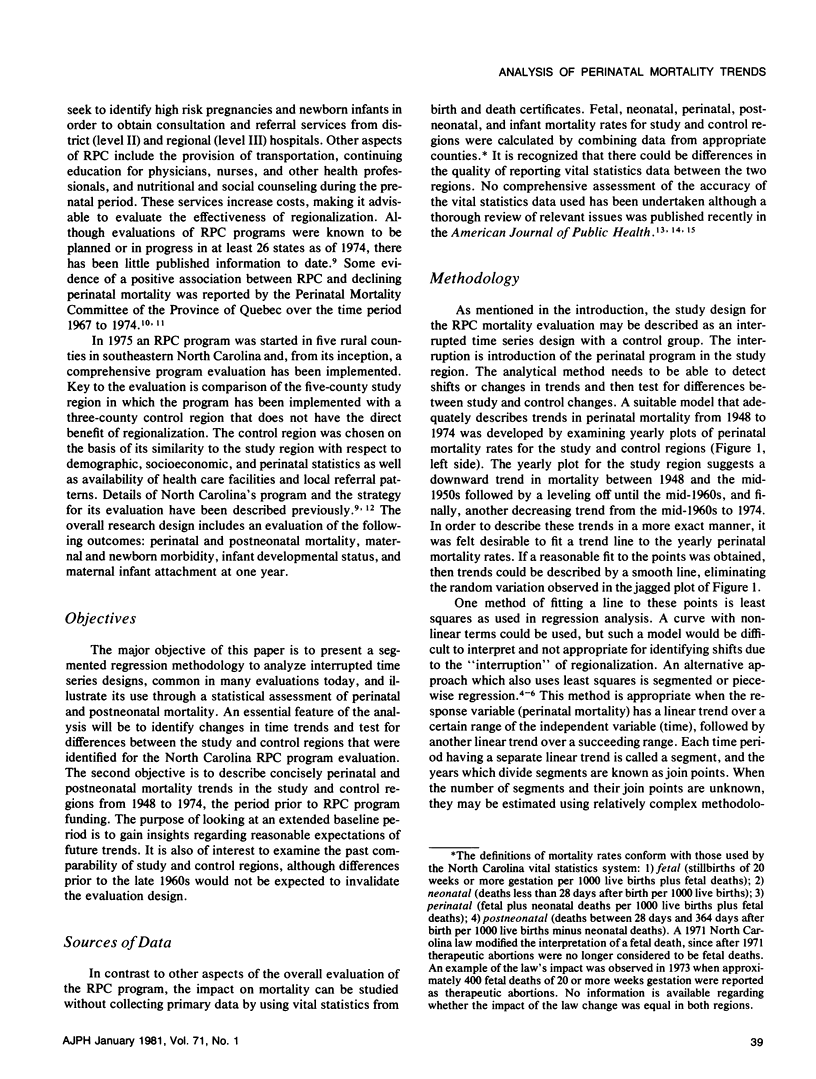
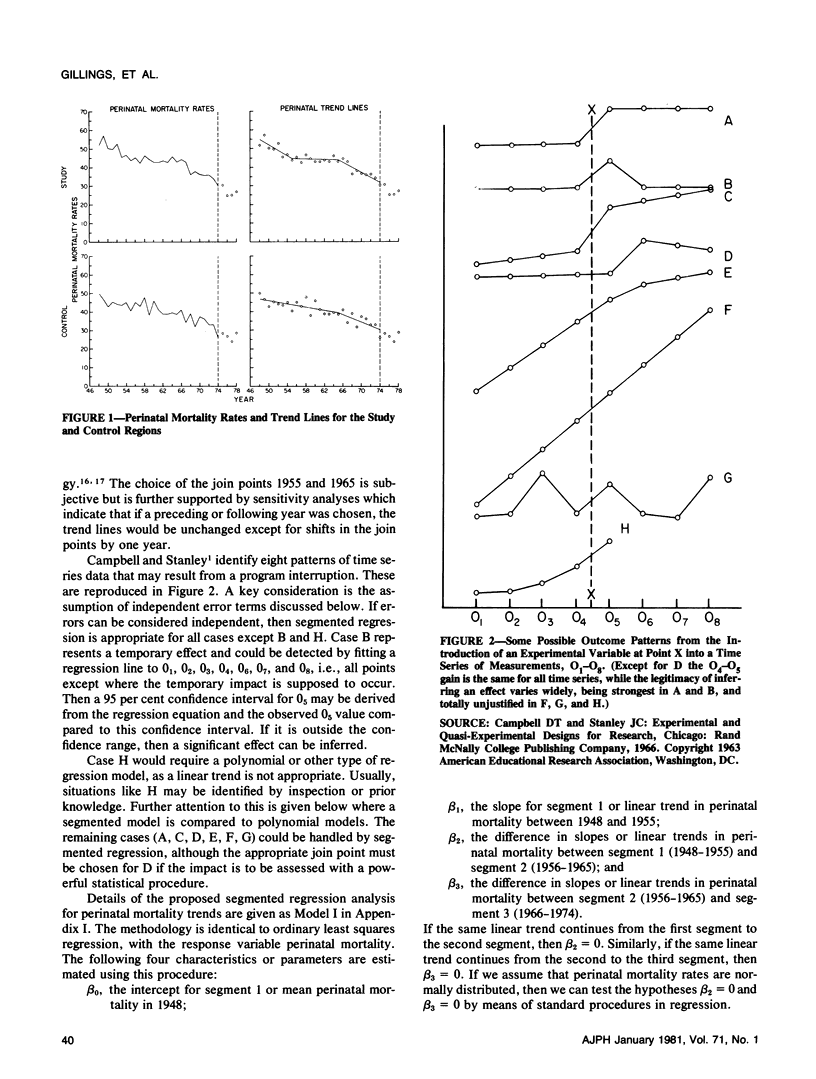
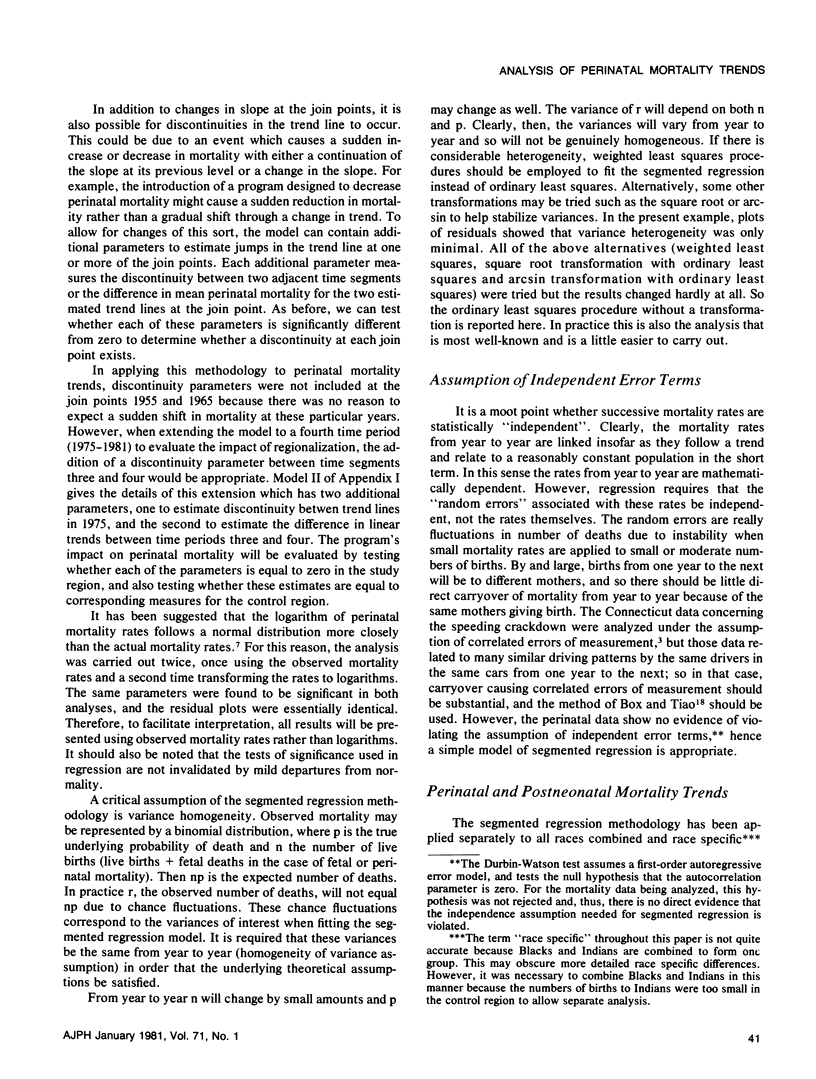

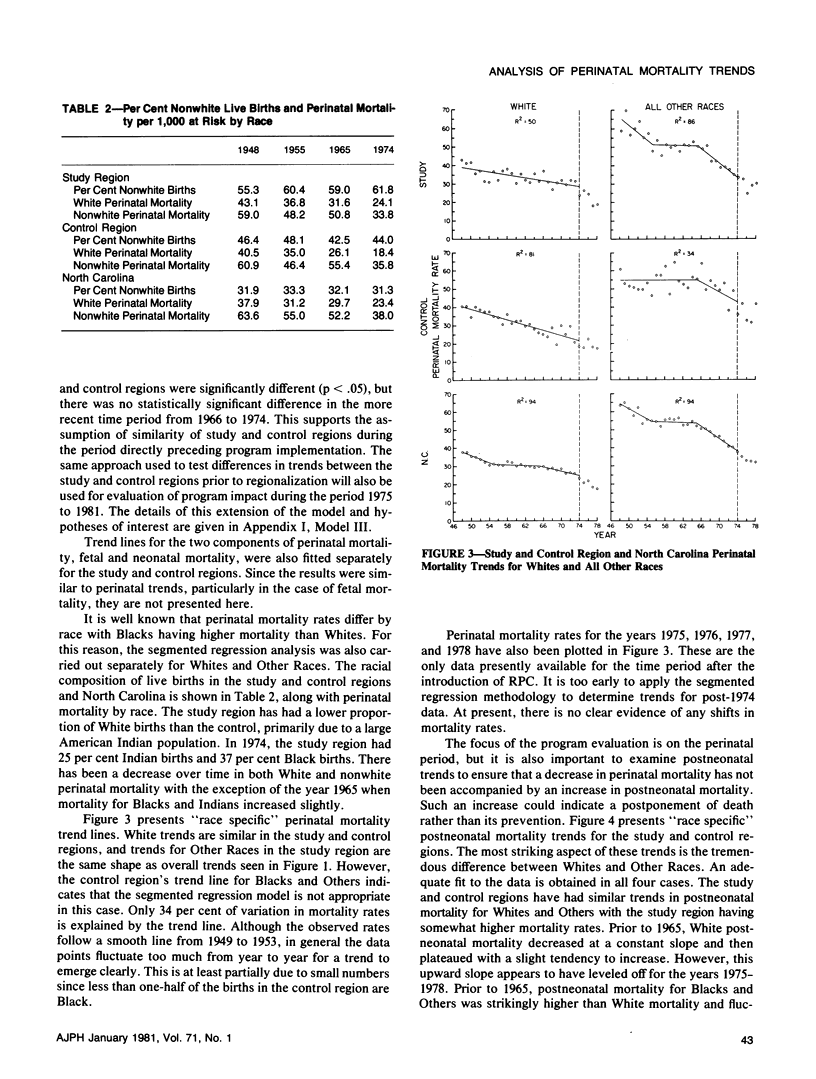
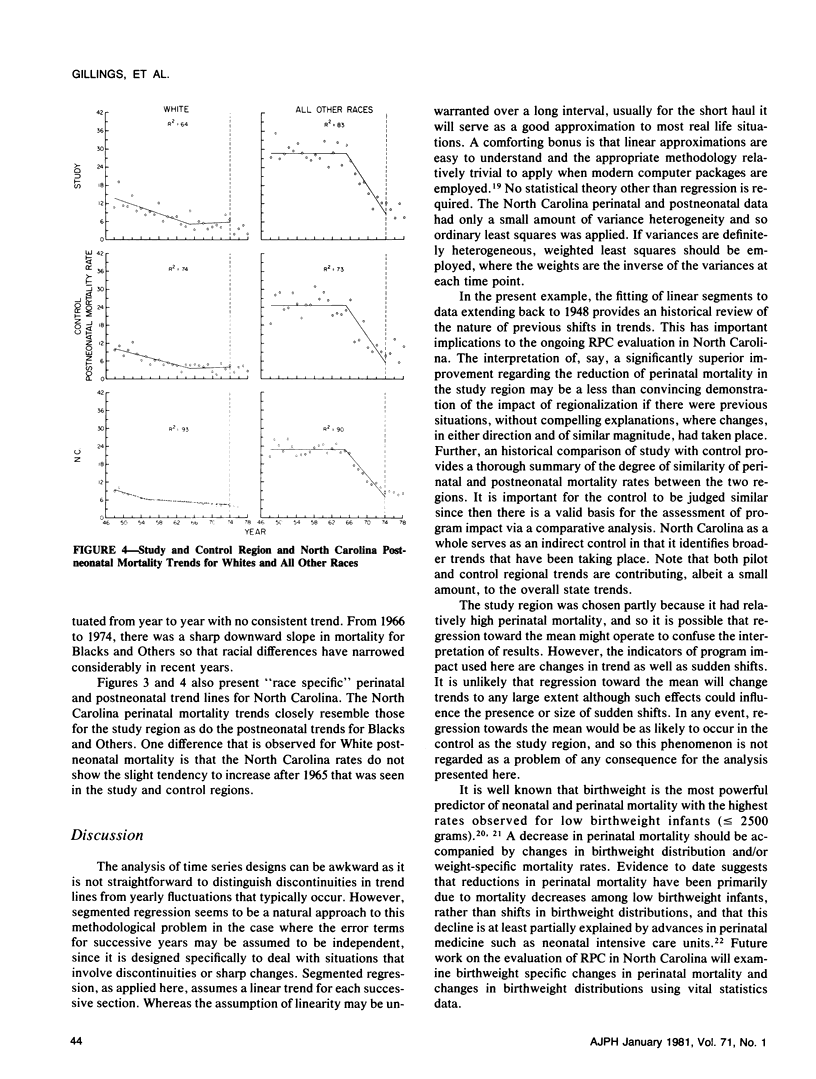
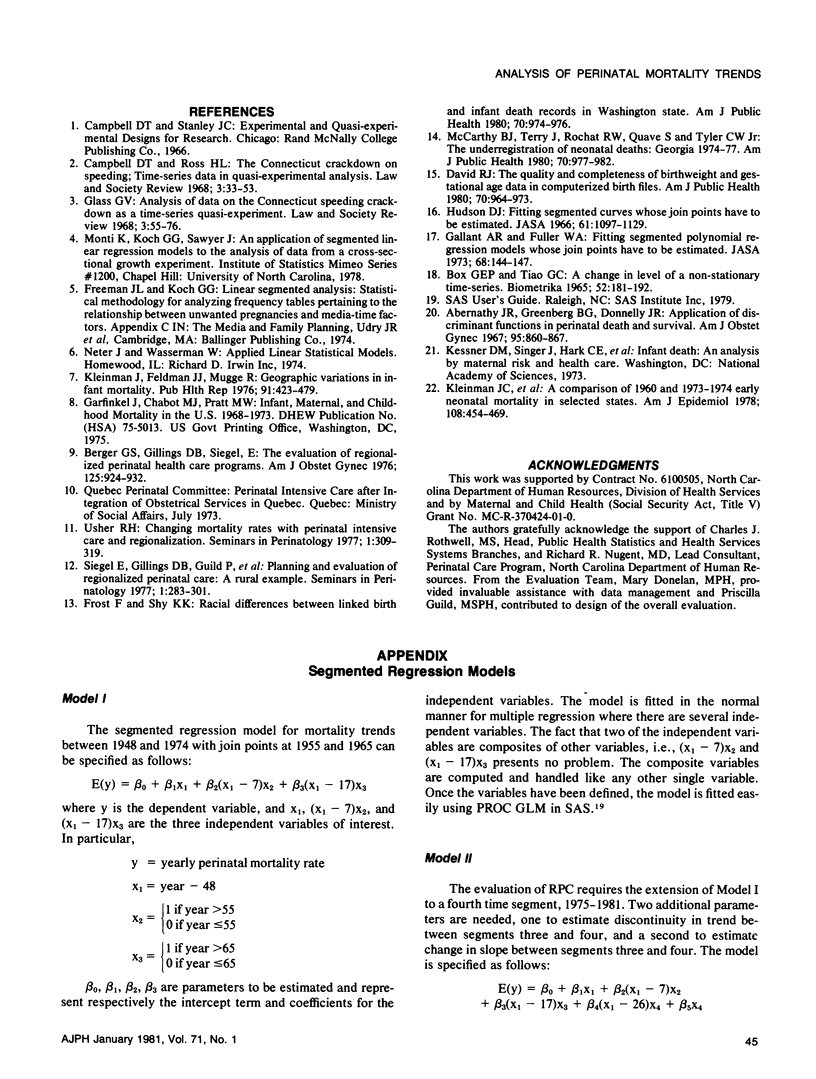

Selected References
These references are in PubMed. This may not be the complete list of references from this article.
- Abernathy J. R., Greenberg B. G., Donnelly J. F. Application of discriminant functions in perinatal death and survival. Am J Obstet Gynecol. 1966 Jul 15;95(6):860–867. doi: 10.1016/0002-9378(66)90091-3. [DOI] [PubMed] [Google Scholar]
- Berger G. S., Gillings D. B., Siegel E. The evaluation of Regionalized Perinatal Health Care Programs. Am J Obstet Gynecol. 1976 Aug 1;125(7):924–932. doi: 10.1016/0002-9378(76)90490-7. [DOI] [PubMed] [Google Scholar]
- David R. J. The quality and completeness of birthweight and gestational age data in computerized birth files. Am J Public Health. 1980 Sep;70(9):964–973. doi: 10.2105/ajph.70.9.964. [DOI] [PMC free article] [PubMed] [Google Scholar]
- Frost F., Shy K. K. Racial differences between linked birth and infant death records in Washington State. Am J Public Health. 1980 Sep;70(9):974–976. doi: 10.2105/ajph.70.9.974. [DOI] [PMC free article] [PubMed] [Google Scholar]
- Kleinman J. C., Feldman J. J., Mugge R. H. Geographic variations in infant mortality. Public Health Rep. 1976 Sep-Oct;91(5):423–432. [PMC free article] [PubMed] [Google Scholar]
- Kleinman J. C., Kovar M. G., Feldman J. J., Young C. A. A comparison of 1960 and 1973--1974 early neonatal mortality in selected states. Am J Epidemiol. 1978 Dec;108(6):454–469. doi: 10.1093/oxfordjournals.aje.a112644. [DOI] [PubMed] [Google Scholar]
- McCarthy B. J., Terry J., Rochat R. W., Quave S., Tyler C. W., Jr The underregistration of neonatal deaths: Georgia 1974--77. Am J Public Health. 1980 Sep;70(9):977–982. doi: 10.2105/ajph.70.9.977. [DOI] [PMC free article] [PubMed] [Google Scholar]
- Siegel E., Gillings D., Guild P., Nugent R. Planning and evaluation of regionalized perinatal care: a rural example. Semin Perinatol. 1977 Jul;1(3):283–301. [PubMed] [Google Scholar]
- Usher R. Changing mortality rates with perinatal intensive care and regionalization. Semin Perinatol. 1977 Jul;1(3):309–319. [PubMed] [Google Scholar]


